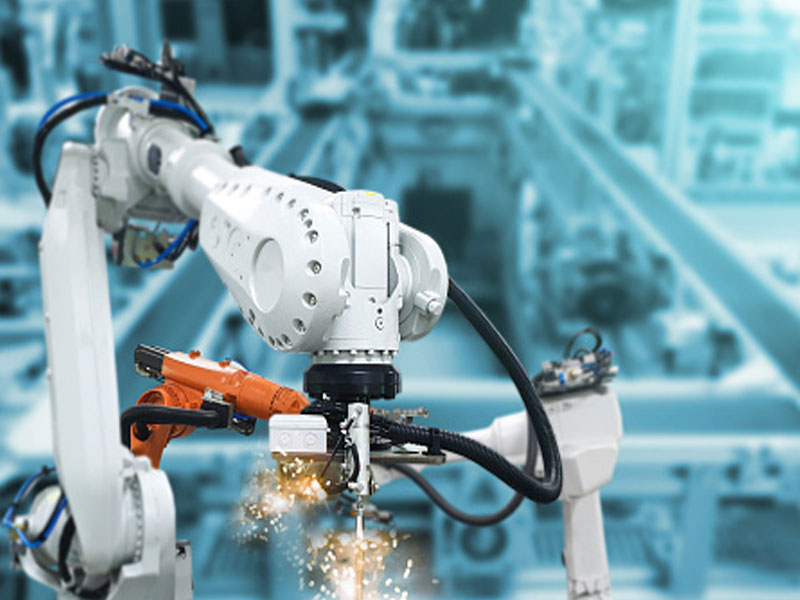Mahindra Lifespaces unveils India’s first home buying experience on the Metaverse
SOURCE: HTTPS://INDIATECHNOLOGYNEWS.IN/
OCT 31, 2023
3 cutting-edge advances in the world of modern robotics that you have to know
SOURCE: HVTIMES.COM
OCT 05, 2021

If you’ve ever watched any Sci-Fi movie where robots or advanced machine civilizations are ruling the universe, you might have a slight apprehension toward robotics.
This is largely because we humans naturally fear the possibility of our own creations one day destroying us, and this is why robots are often at the antagonistic end in many books and films. But the good news is that we’re not hiding among the rubble of civilization, scurrying like rats around a robot-ruled planet. At least, not yet.
Robots in 2021 are doing far more good than they are waging mindless carnage. In fact, without modern robotics, much of our advances in medicine and science would not be possible.
Today, there are numerous advances in the world of modern robotics that are noteworthy, but a few stand out among the crowd. Here, we’ll explore 3 of the coolest cutting-edge technologies in the robotics space.
Nanobots have been the stuff of science fiction for many decades. But the fact is that this technology, known as nanotechnology, is much more advanced now than in years past.
Imagine a large swarm of bees, shifting and swirling around in the sky in unison, each aimed at a specific task. Now imagine that this entire swarm can fit inside a teaspoon. This is nanotechnology at work.
Though applications for nanobots are still in developing stages, scientists are hoping that one day nanobots can be injected into the bloodstream and actually be able to function as white blood cells with the ability to target and destroy specific infections and diseases such as cancer and many others.
Creating a microscopic robot takes a great deal of skill and technology. So just imagine having to create millions of these tiny automatons.
Much of the surgical procedures performed today would be impossible without the use of robotics applications. In fact, these machines have made surgeries safer and less invasive than in years before.
For example, the company, Intuitive Surgical, which produces the da Vinci platform, is one of the largest and most pioneering companies on the cutting-edge of modern robotics. Its surgical robot applications allow surgeons access to tools that they can fully manipulate and perform precision movements in the most delicate areas of the human body.
Robotics of this kind requires a complex production process, from the use of heat staking machines for industry professionals to months of testing in research and development.
Surgical robotics allow us to study the human body in a much more intimate way without having to rely on dated and invasive procedures.
In 2016, “Sophia” was activated. This humanoid robot with advanced AI technology is a learning machine, and it was also the first robot to be granted citizenship in Saudi Arabia.
Further, Sophia also addressed a conference in India in 2019, and her makers claim that she can remember faces and names, have contextual conversations, and can mimic almost all human expressions.
Designed to look like Audrey Hepburn, Sophia is just the beginning in the world of humanoid AI robotics.
We often equate AI robotics with movies like The Matrix or The Terminator, but so far we have nothing to fear from these robots, which largely still require the need for humans to control and operate these complex systems.
These robots are being designed to serve a greater purpose. Futuristic applications involve the hope that these robots will one day be able to explore foreign worlds and be sent to places on the planet where humans could not survive.
The world of robotics is advancing as fast as the imagination can envision. And what was once a story that fit well into the world of science-fiction, is quickly becoming a reality that we can all see and touch.
In the coming decades, the use and development of robotics are only expected to increase, and the advancement of our human civilization is sure to follow.
LATEST NEWS
WHAT'S TRENDING


Data Science
5 Imaginative Data Science Projects That Can Make Your Portfolio Stand Out
OCT 05, 2022

SOURCE: HTTPS://INDIATECHNOLOGYNEWS.IN/
OCT 31, 2023
SOURCE: HTTPS://FINANCE.YAHOO.COM/
SEP 28, 2023
SOURCE: HTTPS://MEDIABRIEF.COM/
SEP 22, 2023
SOURCE: HTTPS://WWW.BUSINESS-STANDARD.COM/INDIA-NEWS/METAVERSE-WEB3-MARKET-TO-GROW-40-ANNUALLY-TO-REACH-200-BN-BY-2035-123060200394_1.HTML
JUN 28, 2023
SOURCE: HTTPS://WWW.WIRED.COM/STORY/WHAT-IS-THE-METAVERSE/
JUN 20, 2023